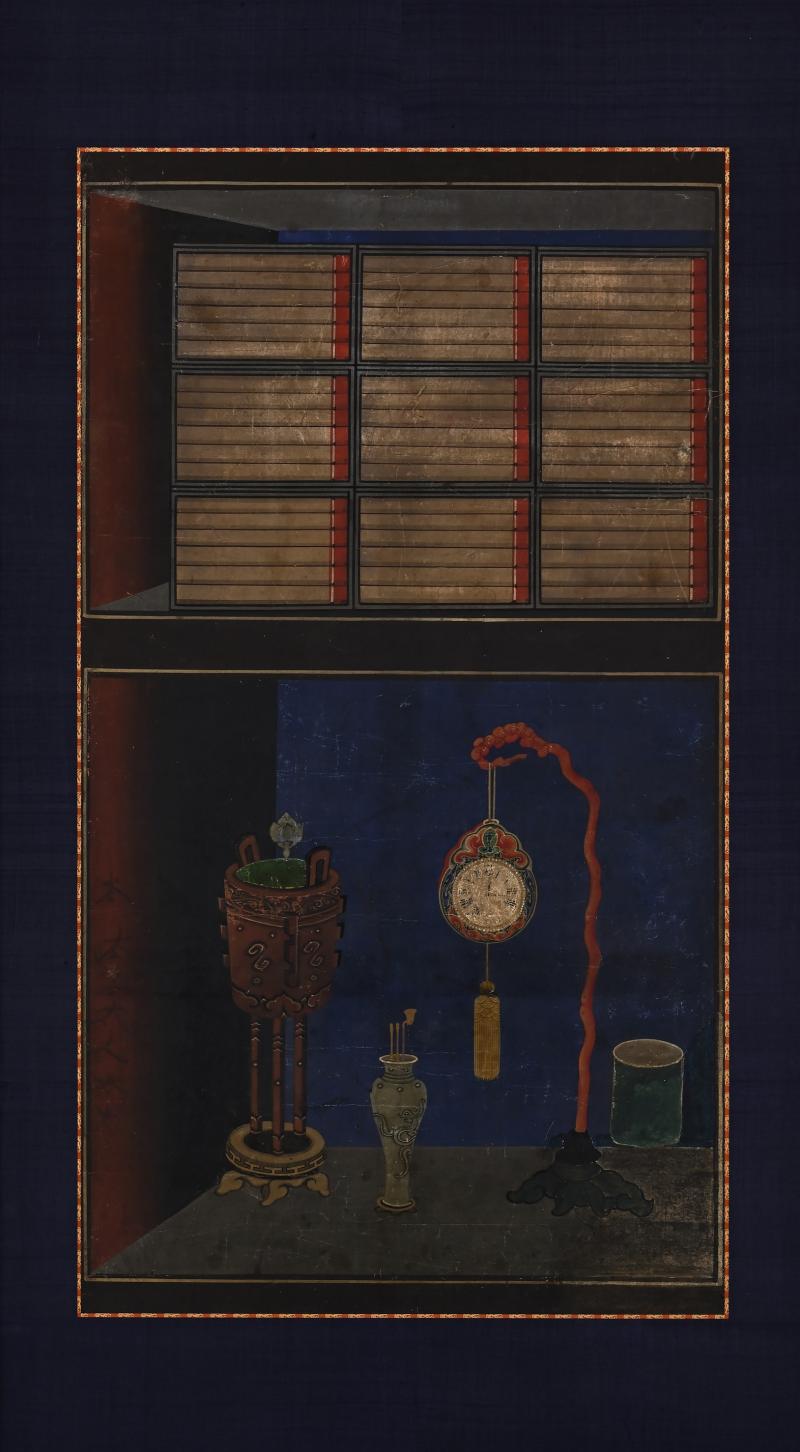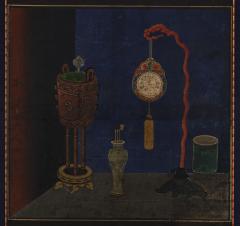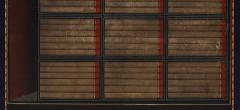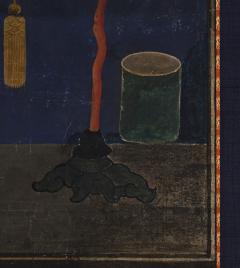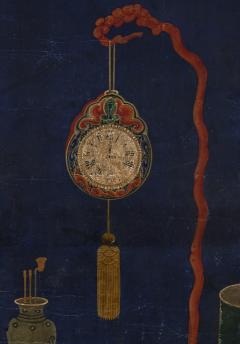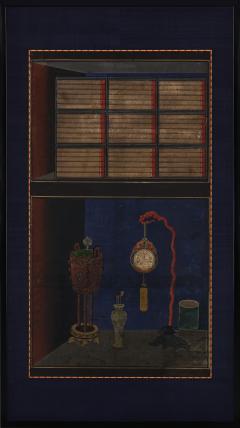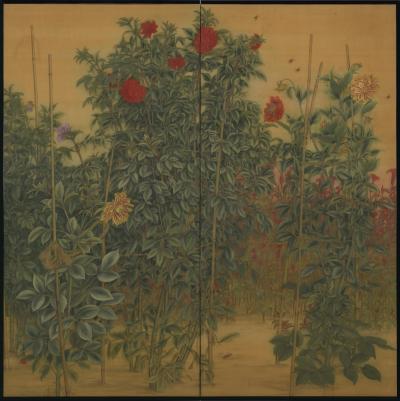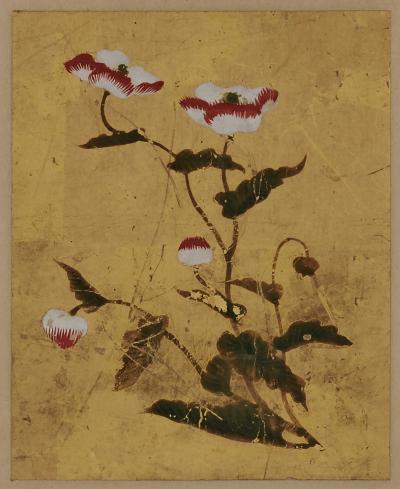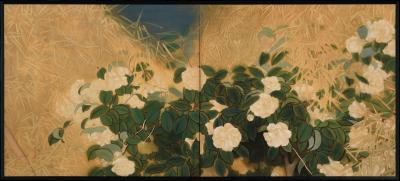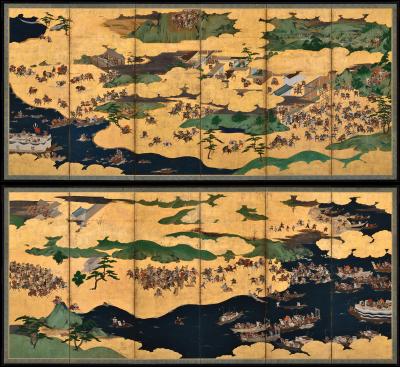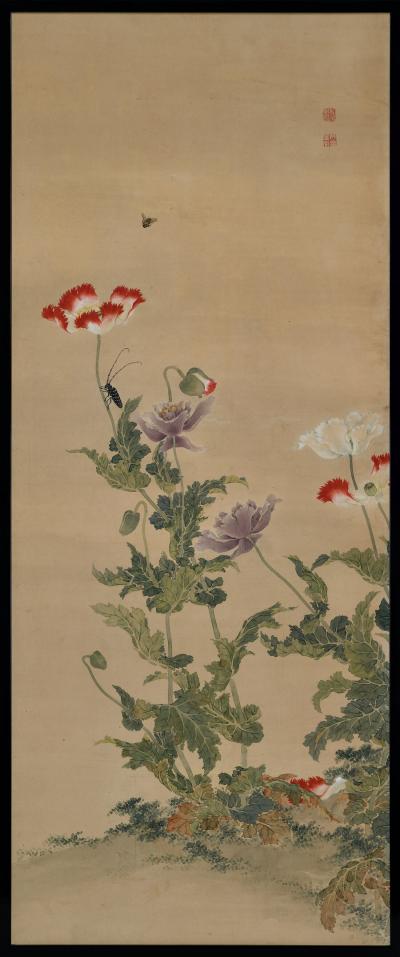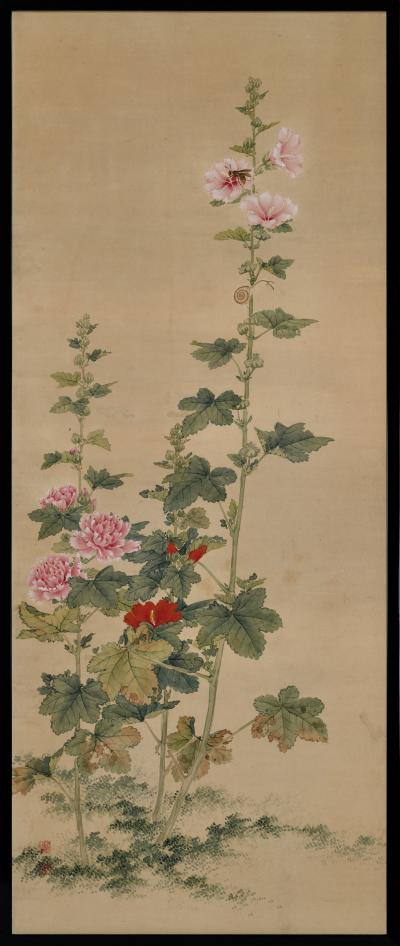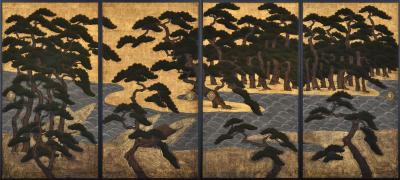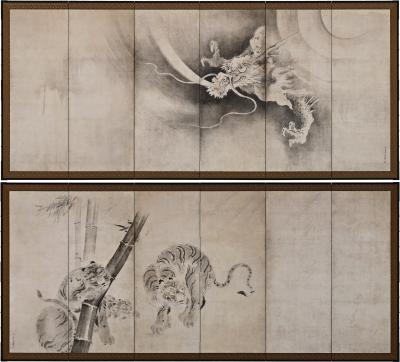Listings / Fine Art / Paintings / Figurative
Chaekgeori painting. 19th Century Joseon. Books & Scholars’ Accouterments.
-
Description
Books and Scholars’ Accouterments; Chaekgeori
Second half of the 19th century
Korean framed panel. Ink and color on paper.
Dimensions: H. 121 cm x W. 67.5 cm
Price: USD 12,000
This Korean Chaekgeori painting depicts two open shelves in a rough approximation of Western linear perspective, creating an appearance of three-dimensional depth. The lower shelf displays Chinese porcelain, an archaic Chinese bronze and a clock set against a luminous rear panel of deep blue. The upper shelf is stacked with books.
Of the various kinds of Korean decorative painting which were popular towards the end of the Joseon period (1392-1897), Chaekgeori or chaekgado is the genre that most embodies the spirit and aspirations of the period’s literati. The genre depicts books and other material commodities as symbolic embodiments of knowledge, power and aspiration. Chinese curiosities from the Qing dynasty (1644–1912) entered the homes of the upper classes of Korea during this period, and this is reflected in these paintings. Books mingle with scholarly objects, all competing for prominence of place and the attention of the viewer. The clock is an example of new technology brought to East Asia via Jesuit missionaries and Western merchants.
This panel is the work of a Korean court painter who created paintings for the elite of Korean society. There was a complex family lineage of professional painters and they transmitted painting themes and styles within those families. The elements of this panel, including the Chinese bronze and porcelain and the clock are reproduced virtually identically in a number of important Chaekgeori screen paintings dating to the second half of the 19th century. It is directly comparable to a work by Yi Taek-gyun in the Cleveland Museum of Art. Its size is highly unusual. It is a single sheet measuring 20” across and 36” high (51cm x 92cm). The question remains as to whether this was originally designed as a single panel or whether it was originally part of a folding screen. Thus far Korean Chaekgeori have only been discovered in folding screen formats of 8, 10 and 12 panels. The width of these screen panels ranges from 8.25” to 13.75” (21cm to 35cm). The 20” width of this panel lends substantial weight to the theory that it was painted to be displayed as a single panel as it is currently presented. -
More Information
Period: 19th Century Condition: Good. Styles / Movements: Asian Art Incollect Reference #: 762130 -
Dimensions
W. 26.57 in; H. 47.64 in; W. 67.5 cm; H. 121 cm;
Message from Seller:
Kristan Hauge Japanese Art, based in Kyoto's museum district since 1999, specializes in important Japanese screens and paintings for collectors, decorators, and museums worldwide. Contact us at khauge@mx.bw.dream.jp or +81 75-751-5070 for exceptional access to Japanese art and history.















